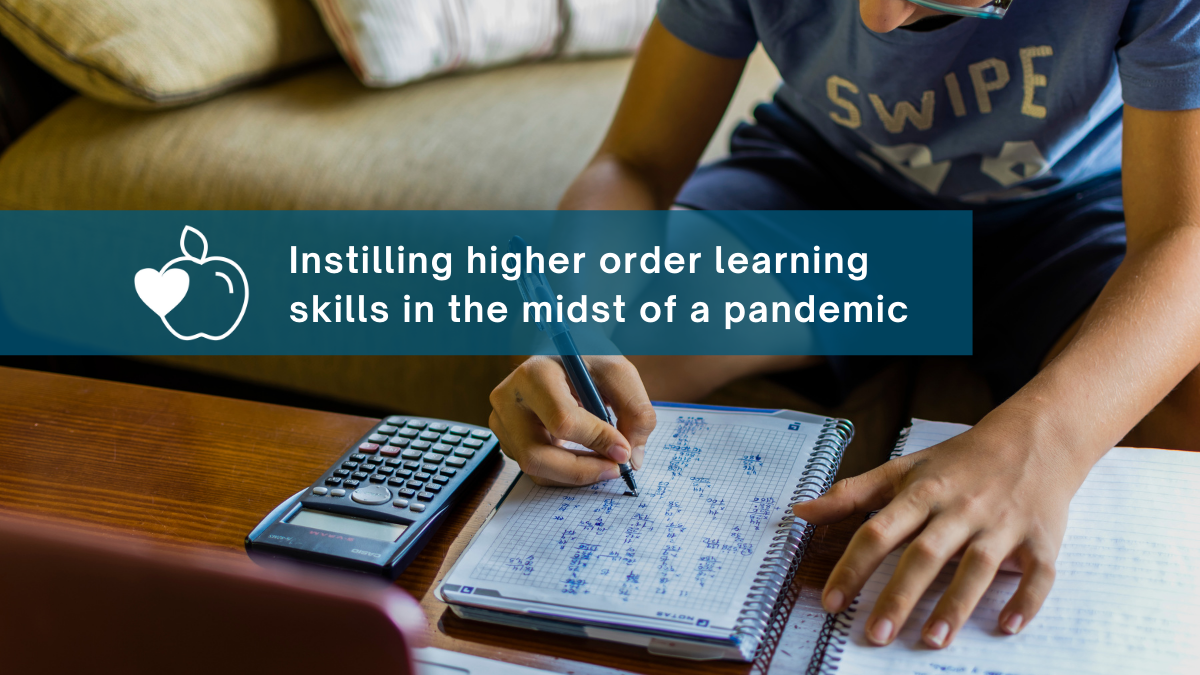Higher order learning is more than just restating facts. It requires you to do more with what you’ve learned, by understanding, making connections, linking to other facts and concepts, as well as applying what was learned.
Adopting new teaching methods
The COVID-19 pandemic has dismantled learning processes across the world, including South Africa. Schooling systems have had to adjust to new forms of teaching that vary from the traditional learning structures that they are accustomed to.
Learners have been forced to spend less time in (physical) schools, in order to lower the risks associated with the transmission of the virus. This has resulted in the adoption of alternative teaching methods with minimal interaction with teachers.
The need to integrate sophisticated teaching methods and knowledge absorption skills has become primal, since more learning outcomes have to be achieved through limited engagements between teachers and learners.
‘The pandemic has transformed our classroom setting. The once interactive, collaborative, and cooperative classroom with the predictable timetables, is now a place filled with stress and uncertainty. Teachers are expected to adapt and transform their teaching patterns and styles,’ says Johannesburg-based Educational Psychologist, Gaby Shapiro.
‘Teachers are given more responsibility in ensuring that safety protocols are met, ensuring social distance amongst students, as well as overseeing general health practices, such as hand-washing. These responsibilities could further impact and exacerbate feelings of stress and anxiety in the classroom and the school environment,’ she adds.
Higher order learning explained
Higher order learning is a process which involves the cognitive absorption of lessons, in a manner that allows learners to analyse the disseminated information and apply it in practical experiences, so that they are able to produce more knowledge from what has been learned. It goes beyond repeating what the educator says and demonstrates; it is encompassed by the genuine processing of information. The natural applications thereof serve as proof of complete understanding and comprehension of the information, as shared by the educator.
Higher order learning is a practice best described by Bloom’s Taxonomy, which was created by Benjamin Bloom in 1956 as a classification system designed to help educators approach teaching as an exercise that impacts cognitive, affective, and sensory domains.
Creating a new equilibrium
Shapiro believes that the changes brought about by COVID-19 to the educating structure need a collaborative effort from teachers, parents, and learners, in order to create a new equilibrium where not only the learning of educational content can take place, but also the learning of new ways of approaching the educating and learning processes.
‘COVID-19 has not only impacted a child’s ability to learn; it has also impacted their social and emotional development. Social distancing regulations have made it difficult for children of all ages to develop personal relationships. After-school activities have also been negatively affected, further impacting a child’s social, emotional, and even physical development,’ she says.
‘Stress and anxiety are very common in educational settings. However, given the current situation in schools due to the COVID-19 pandemic, stress and anxiety are exacerbated and they have a critical impact on the learning and memory processes, which are vital for learning and classroom performance,’ she adds.
It is important for educators to find ways of instilling this particular learning skill in their learners. Shapiro believes it’s important to understand and identify each learner’s needs and gaps, upholding a tailored teaching method for every child. She points out that having this understanding will allow educators to develop a specific teaching plan that might have to involve other learning professionals.
The value of a well-rounded approach
Shapiro indicates that taking care of learners’ social and emotional needs is just as important as addressing their academic needs. A well-rounded approach will be beneficial when helping them to adopt higher order learning.
‘Despite these obstacles facing teachers and students daily, we should try to approach this current situation with optimism and positivity. It is possible that a feeling of cohesion and community can be established in the classroom, where we support each other (emotionally, socially, and academically) with understanding and patience,’ she says.
‘We need to provide multiple ways to learn and remember. For example, we can make use of visual aids, such as videos and pictures, and/or games to help children remember the information presented to them. Provide children with support where it is needed, through repetition of work or concepts, extra stimulation of certain concepts, and extra lessons or regular check-ins,’ she concludes.
About the author:
Levi Letsoko is an experienced media content writer and a parent based in Johannesburg. He writes for publications such as Brainstorm Magazine, Fast Company and The Voice Of Local Government with a strong focus on tech, entrepreneurship, corporate governance and business leadership. He is equally passionate about coding.



